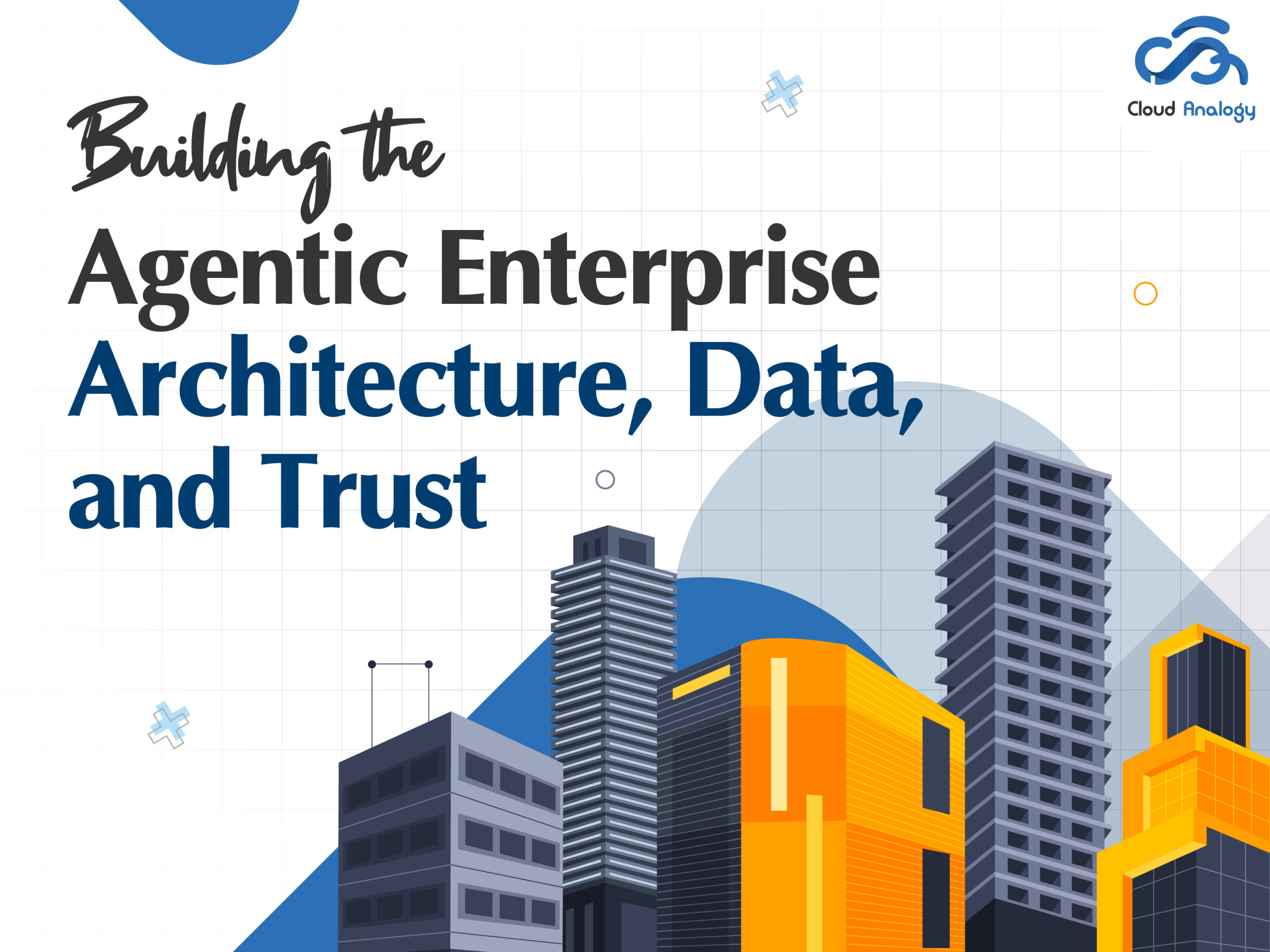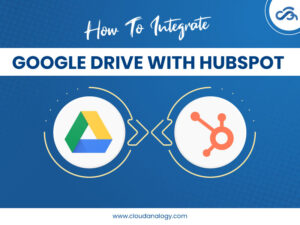Sharing is caring!
Enterprises are changing. Automation is no longer enough.
Today, the focus is on agentic systems, where AI doesn’t just follow rules, but thinks, plans, acts, and learns.
An agentic enterprise combines human intelligence with autonomous AI agents to create a system that adapts on its own. It’s flexible. It’s dynamic. It’s built for the age of intelligence.
But to build such an enterprise, three pillars are essential: architecture, data, and trust. These pillars decide how smoothly agents and humans can work together, how reliable their actions are, and how safe the system remains.
What Is an Agentic Enterprise?
In a traditional enterprise, automation runs on commands. In an agentic enterprise, AI agents run on goals. They perceive their environment, plan their actions, and improve through feedback.
Think of them as digital teammates. They can write emails, manage workflows, predict outcomes, and even suggest better strategies, all without constant supervision.
Salesforce defines this as the next phase of the AI revolution, a model where every team has an intelligent partner that never sleeps. Salesforce’s Agentforce framework shows how this concept can be applied across industries, from customer service to finance.
Why Does Architecture Matter?
The first step to becoming agentic is designing the right architecture. Without it, agents are like cars without roads.
A robust architecture connects data, decisions, and actions into one continuous loop. Salesforce’s Agentic Enterprise Architecture framework recommends a multi-layered structure that balances autonomy with control.
Here’s how these layers work together.
1. Perception Layer
This is the eyes and ears of your enterprise. It collects data, from CRM systems, emails, sensors, or social platforms. The better this layer, the more context your AI agents have to make decisions.
2. Cognitive Layer
This is the brain. Here, large language models (LLMs), reasoning engines, and planning tools work together. They interpret data, evaluate goals, and plan actions, much like how humans think before acting.
3. Action Layer
The hands and voice of the enterprise. This layer converts plans into real results. Agents execute actions, update databases, send alerts, call APIs, or even communicate with customers.
4. Integration Layer
The connective tissue. It links systems across the organization, CRM, ERP, analytics tools, and APIs, so that agents can work seamlessly across departments.
5. Orchestration Layer
This is where everything comes together. It manages interactions between agents, humans, and workflows. It ensures the right level of control, collaboration, and accountability.
6. Infrastructure Layer
The foundation. A cloud-based, scalable environment that can handle AI workloads, security, and performance. Without strong infrastructure, the rest of the layers can’t run smoothly.
The architecture also depends on the complexity of the task.
- Single-agent systems handle simple, repetitive work, such as chatbots or email summarization.
- Multi-agent systems collaborate like teams, each agent focusing on a specific domain, like sales, service, or operations.
The real power lies in orchestration, where multiple agents communicate, coordinate, and adapt as one system.
How Does Data Drive the Agentic Enterprise?
Without data, even the smartest agent is blind. AI agents need a unified, trustworthy, and real-time data ecosystem to perform accurately.
The Salesforce Data Cloud shows how this can be achieved. It connects all customer and business data into a single source of truth, allowing agents to act confidently and contextually.
Here’s what strong data foundations include:
- Unified Data Fabric: Break the situation. Integrate structured and unstructured data across systems. Give every agent a common view of the business.
- Contextual Intelligence: Metadata matters. It tells agents what data means, where it comes from, and how reliable it is. This context helps agents make better choices.
- Real-Time Synchronization: Static data creates lag. Real-time data ensures agents respond to what’s happening now, not what happened yesterday.
- Semantic Layer: This translates technical data into business terms. It helps agents “understand” things the way humans do, in plain business context.
- Autonomous Data Agents: Specialized AI agents can now maintain data quality, monitor pipelines, and handle governance tasks automatically.
How Do You Build Trust in Agentic Systems?
Autonomy brings power, but also responsibility. As AI agents start making decisions, trust becomes the most important pillar.
Trust must be built at every stage: design, deployment, and operation.
Human Oversight
Always keep a human-in-the-loop. Agents should ask for human review when confidence is low or when the situation is sensitive.
Transparency and Explainability
Every action an agent takes should be traceable. Logs and reasoning paths create an audit trail that builds confidence and compliance.
Security by Design
Implement strict access controls. Define what each agent can see, do, and change. Secure your models, APIs, and infrastructure from attacks.
Responsible Governance
Set clear policies from day one. Define ethical guidelines and accountability structures. This avoids confusion and prevents misuse later.
Privacy and Cultural Alignment
Respect privacy through techniques like data masking and zero data retention. More importantly, communicate clearly with employees
Where Does Cloud Analogy Fit In?
At Cloud Analogy, we believe that the Agentic Enterprise is not just a future concept, it’s a present opportunity.
As a Salesforce Summit Partner and AI innovation leader, Cloud Analogy builds architectures that connect data, decisions, and AI-driven automation.
Our expertise with tools like Agentforce 360, AIonOS, and MCUtility helps businesses integrate intelligent agents safely and effectively.
From building multi-agent orchestration layers to ensuring data governance and compliance, we help enterprises transition smoothly into the agentic era.
We also help create trust frameworks, combining security, ethics, and human oversight to ensure AI is always aligned with your goals.
Whether you are a small business or a large enterprise, Cloud Analogy helps you lay the foundation for your own Agentic Enterprise, one that learns, adapts, and grows.
What Does the Future Look Like?
Building the Agentic Enterprise is a journey. It’s not only about technology, it’s about responsibility, collaboration, and design.
Start with a strong architecture. Invest in unified, reliable data. Embed trust into every layer.
When these three pillars align, your enterprise becomes more than automated, it becomes adaptive. It learns, it reasons, and it evolves.
As Salesforce says, “Every company will become an Agentic Enterprise.” The question is, how soon will yours begin the transformation?
Frequently Asked Questions (FAQs)
Salesforce consulting services help companies design, build, and manage intelligent systems that think and act on their own. They connect data, AI, and automation into one smart loop.
Salesforce consulting partners bring experience, strategy, and trusted methods. They help design architectures that link AI agents, CRM platforms, and analytics tools.
Salesforce consulting companies help build the digital backbone of an Agentic Enterprise. They design architectures that enable AI, humans, and data systems to communicate seamlessly.
Top Salesforce consulting firms know that trust is everything in AI-driven systems. They build frameworks that are transparent, explainable, and well-governed. From secure APIs to clear audit trails, every layer is designed for accountability.
Salesforce application development brings agentic ideas to life. Through custom apps, APIs, and automation flows, companies can create AI agents that act, learn, and collaborate.










